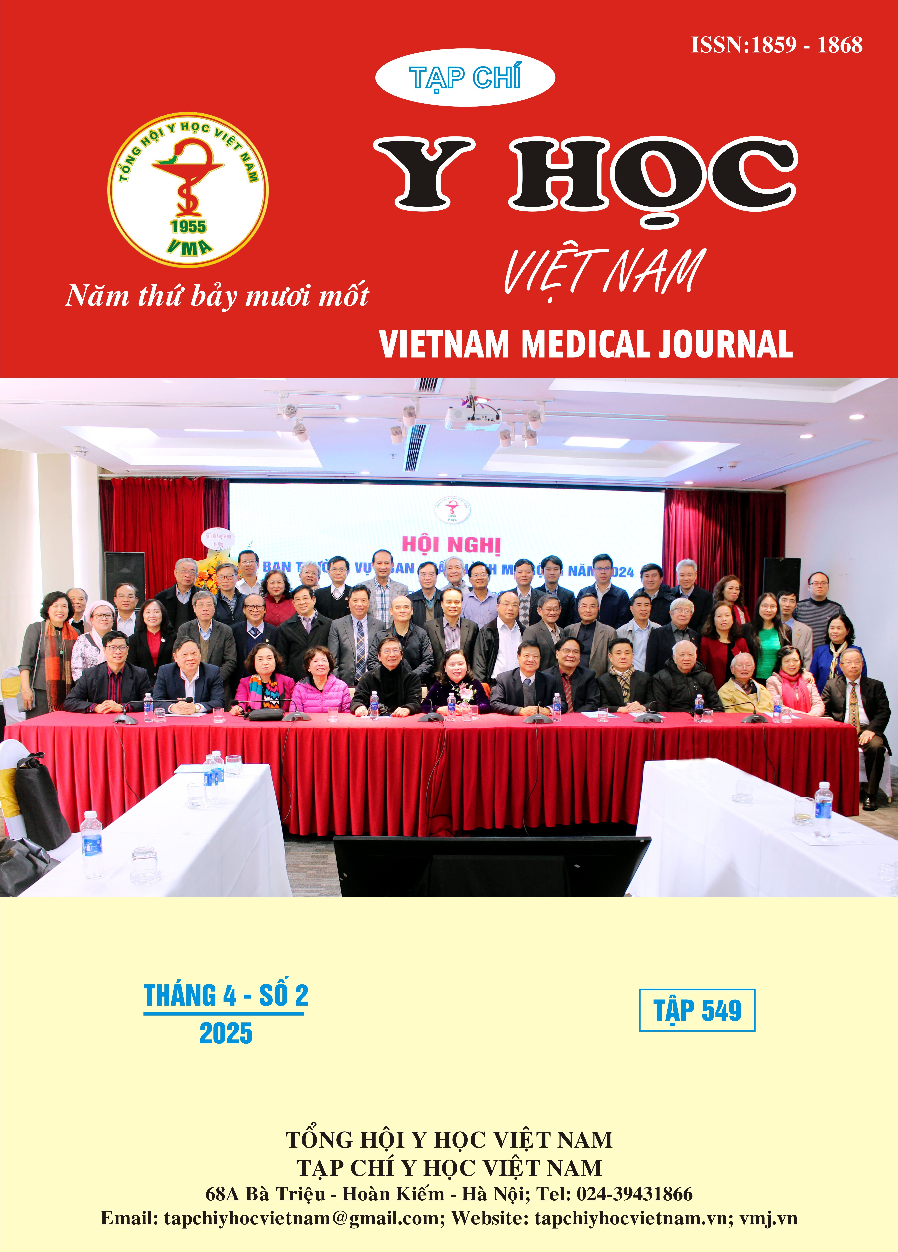ĐẶC ĐIỂM ĐAU DA ĐẦU VÀ CÁC YẾU TỐ LIÊN QUAN TRÊN BỆNH NHÂN VẢY NẾN DA ĐẦU
Nội dung chính của bài viết
Tóm tắt
Mục tiêu: Khảo sát đặc điểm đau da đầu ở bệnh nhân vảy nến da đầu và đánh giá mối liên quan giữa các yếu tố dịch tễ, lâm sàng với mức độ và đặc điểm đau da. Đối tượng và phương pháp: Nghiên cứu cắt ngang mô tả được thực hiện trên 107 bệnh nhân vảy nến da đầu tại Bệnh viện Da Liễu TP. Hồ Chí Minh từ tháng 10/2024 đến tháng 01/2025. Các thông tin về đặc điểm dịch tễ, lâm sàng và mức độ nghiêm trọng của bệnh được thu thập. Cảm giác đau da đầu được đánh giá thông qua phỏng vấn trực tiếp bằng Thang đo chất lượng cơn đau (PQAS – Pain Quality Assessment Scale), đồng thời ngưỡng đau được đo bằng thiết bị đo ngưỡng đau kỹ thuật số sử dụng áp lực. Kết quả: Có 63,6% bệnh nhân vảy nến da đầu gặp tình trạng đau da đầu với cường độ trung bình 5,2 ± 2,1. Đau da đầu có mối liên quan chặt chẽ với mức độ nghiêm trọng của bệnh, thể hiện qua các chỉ số PASI (Psoriasis Area and Severity Index), SPGA (Scalp Physician Global Assessment), và PSSI (Psoriasis Scalp Severity Index). Bệnh nhân có chỉ số PASI hoặc PSSI cao hơn có xu hướng đau nhiều hơn (p < 0,001). Các đặc điểm đau phổ biến bao gồm cảm giác khó chịu (97,1%), ngứa (94,1%), bề mặt (94,1%), ngứa ran (92,7%), lan tỏa (92,7%), và sâu (88,3%). Đau da đầu ảnh hưởng đáng kể đến chất lượng cuộc sống của bệnh nhân, đặc biệt là tâm trạng (97,1%), hoạt động thường ngày (91,2%), tận hưởng cuộc sống (86,8%), và giấc ngủ (85,3%). Kết luận: Đau da đầu là triệu chứng phổ biến ở bệnh nhân vảy nến da đầu, có mối liên quan rõ rệt với mức độ nghiêm trọng của bệnh và tác động đáng kể đến chất lượng cuộc sống. Việc đánh giá và kiểm soát đau da đầu nên được chú trọng trong điều trị vảy nến nhằm cải thiện tình trạng bệnh và nâng cao chất lượng sống cho bệnh nhân.
Chi tiết bài viết
Từ khóa
vảy nến, đau da, ngưỡng đau, vảy nến da đầu
Tài liệu tham khảo
2. Ljosaa T, Stubhaug A, Mork C, Moum T, Wahl A. Improvement in Psoriasis Area and Severity Index Score Predicts Improvement in Skin Pain Over Time in Patients with Psoriasis. Acta Derm Venereol. 2013;93(3):330-334. doi:10.2340/00015555-1456
3. Ljosaa TM, Bondevik H, Halvorsen JA, Carr E, Wahl AK. The complex experience of psoriasis related skin pain: a qualitative study. Scand J Pain. 2020; 20(3):491-498. doi:10.1515/sjpain-2019-0158
4. Pithadia DJ, Reynolds KA, Lee EB, Wu JJ. Psoriasis-associated cutaneous pain: etiology, assessment, impact, and management. J Dermatol Treat. 2019;30(5):435-440. doi:10. 1080/09546634.2018.1528330
5. Ljosaa TM, Mork C, Stubhaug A, Moum T, Wahl AK. Skin pain and skin discomfort is associated with quality of life in patients with psoriasis. J Eur Acad Dermatol Venereol. 2012; 26(1): 29-35. doi:10.1111/ j.1468-3083.2011. 04000.x
6. Patruno C, Napolitano M, Balato N, et al. Psoriasis and Skin Pain: Instrumental and Biological Evaluations. Acta Derm Venereol. 2015;95(4):432-438. doi:10.2340/00015555-1965
7. Ljosaa T, Rustoen T, Mørk C, et al. Skin Pain and Discomfort in Psoriasis: An Exploratory Study of Symptom Prevalence and Characteristics. Acta Derm Venereol. 2010;90(1): 39-45. doi:10.2340/ 00015555-0764


